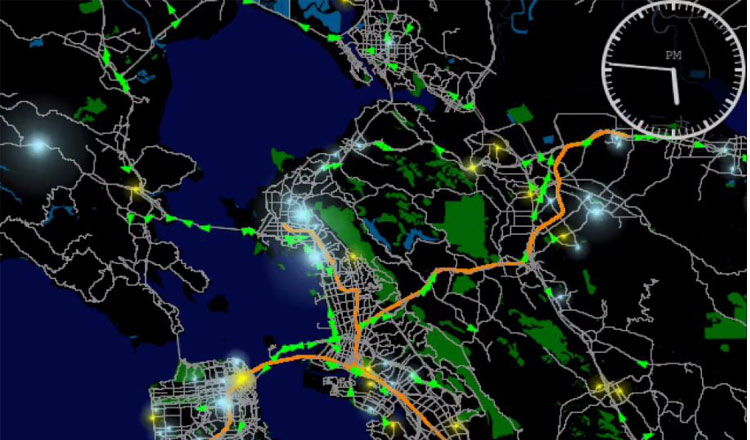Rush hour traffic is a pain point we’ve all experienced. The average American commuter spends 42 hours a year stuck in traffic. That’s almost two days wasted every year. It’s worse for drivers in Los Angeles, who spend 80 hours a year sitting in traffic. And congestion has a cost. In 2014, it cost Americans $160 billion, averaging $960 per auto commuter. Developing smarter cities can help combat this issue – saving Americans time and dollars.
Recently, AT&T announced we are expanding our role in developing smarter cities.
At AT&T Labs we’re specifically exploring how smart traffic design can help commuters spend less time on the road and more time doing the things they want. We have some of the world’s top data science experts conducting research – in collaboration with University of California at Berkeley and the California Department of Transportation – that shows how aggregate and anonymous cellphone data can improve urban planning.
AT&T has also joined the Smart Cities Council to take part in the effort to design and manage projects that help build smart cities around the world.
But we’re not stopping there.
AT&T and the Intelligent Transportation Society of America released an investigative report on how trends in mobility are shaping the future of transportation in a more connected world. We embarked on this study to better understand the social and environmental effects wireless technology has on transportation.
These efforts come at a particularly important time in California, where billions of dollars-worth of in-pavement sensors are reaching the end of their useful lives. The state needs a more innovative – and more efficient – way to monitor and estimate traffic.
Insight from aggregate and anonymous cell phone data could be the answer. It could also save taxpayers’ money and ease transportation woes, while at the same time ensuring consumer privacy. Through our research, we’re exploring two ways to do this – the Connected Corridors Project and the SmartBay Project.
With the Connected Corridors Project, we’re working to understand how we can use anonymous data to forecast traffic patterns in Los Angeles. The information could be used to create “play books” for traffic managers that chart traffic patterns and volume. Let’s say an accident occurs. They can then adjust traffic lights in a way that eases traffic flow.
We’re getting similar insights with the SmartBay Project. The analysis can help plan for the best place to build ride share parking lots. It can also help predict local traffic during a temporary closing of the Oakland Bay Bridge. It even can help determine what happens to traffic when a new stadium is built in Santa Clara.
Just yesterday, we presented this research at the Bloomberg Data for Good Exchange, where data scientists from a variety of sectors and industries presented new and different ways applying data science can solve problems at the core of society. With the country’s population projected to grow by nearly 86 million by 2050, smart, efficient urban planning will continue to grow in importance. Applying the insights we learn from this type of research – and through out Smart Cities initiatives – will continue to benefit the public in a variety of ways.

